Who Was The Sapa Inca?
A. Sutherland - AncientPages.com - Who was the Sapa Inca?
The ruler of the Inca people, known as the Sapa Inca, held a unique and significant position. The "only emperor" title in Quechua signifies his unparalleled role as the sole Inca ruler.
Painting of Manco Cápac - Sapa Inca of the Kingdom of Cusco - 18th century Cusco School. Unknown source - Public Domain
Why did he play such an essential role in the Inca Empire?
The Inca conquest of the northern kingdom of Chimú (Chimor), which began circa 1470, had a significant and far-reaching impact on the Inca’s government and society. The Sapa Inca's political power significantly increased, altering the balance of power in the region.
This conquest focused on the coastal regions of northern Peru and Ecuador and was of great importance in Inca history. The assimilation of Chimú territories and cultural practices into the Inca Empire largely modified and strengthened Inca society.
Chimu was a remarkable society, and the splendor and wealth of the lord of this northern kingdom, his nobles, and the court were impressive. The wealth displayed by the Chimu elites was admired, and the Inca desired to emulate everything that could strengthen their empire.
Due to his divine lineage, the Sapa Inca was revered as a sacred figure during his lifetime. As a direct descendant of the solar deity Inti, he was considered one of his progeny.
Inca Roca, Sixth Sapa Inca, 1 of 14 Portraits of Inca Kings. Online collection of Brooklyn Museum. Public Domain
A Sapa Inca was polygamous, meaning he could have many wives. He wore a hat made of gold and feathers, clothes covered in jewels, and huge gold earrings. He wore an outfit once; after that, it was burned. The deceased Sapa Inca was mummified and kept in his palace.
His divine connection was significant during his reign and after his death. His mummified remains became one of the most sacred objects in the empire, leading to the creation of the imperial ancestor cult, which revered him as a divine entity.
The Sapa Inca, who held unquestionable authority over the Inca Empire, occupied the top of the social hierarchy. His rule extended to all aspects of governance and ownership, symbolizing his complete control over the empire.
While he held the position of commander-in-chief and was theoretically the principal field general, his direct involvement in military operations decreased as the empire expanded. Instead, he delegated field command to generals and officers, often individuals with close familial ties to him. This transition in his military role evolved to respond to the growing complexity of the empire's military affairs.
The Sapa Inca And Social Order
The Incan social order was well-organized. The empire's social hierarchy system was strict, one can say, even harsh, but it made for a stable society. People knew what was expected.
Portrait of Atahualpa, the last Inca Emperor. Ethnological Museum of Berlin, Germany - Public Domain
Inca’s military personnel included generals, officers, and ethnic leaders of combat units. The Sapa Inca had a personal guard known as the ‘orejones’ (in Spanish: "large ears.") The Orejones elite group was primarily composed of members from the Cuzco aristocracy.
As the ‘only emperor’ or ‘unique Inca,’ he had divine right over the people in all the villages in the empire. He was at the top of the social order. Below him were the four Prefects (Apu), each administering a quarter of the empire. They made up the Sapa Inca’s Supreme Council. Under them were the provincial governors, the Tocricoc Apu, who lived in the outlying capitals and acted as government administrators and judges. Then came native rulers of tribes or villages, the so-called ‘curacao,’ and the ‘canyon’ (leaders of a district or community within a town).
He was both a religious and political figure and according to the Incas, politics, and religion were intertwined. The Inca considered their ruler, the Sapa Inca, divine. Some reportedly had up to a hundred children. Upon death, a favored son succeeded him, not necessarily the eldest.
Statue of the ninth Sapa Inca, Pachacutiq, Machupicchu Pueblo in Peru. Image credit. Elemaki - CC BY 2.5
The first Sapa Inca was Manco Capac. The son of the sun god Inti, Manco Capac established the Inca dynasty and assumed the title of Capac, which may be interpreted as "King" in modern terms. While he remains a semi-mythical figure whose actual time period cannot be clearly pinpointed, he is regarded as an Inca hero and many ancient legends connect Manco Cápac to the foundation of Cuzco.
Interestingly, Inca Roca, the sixth monarch in the Inca lineage, is believed to have been the first ruler to officially adopt the title of Sapa Inca, which translates to "Emperor."
The ninth Sapa Inca, Pachacuti (1418–1471/1472), defeated the Chanca (Chanka), a Quechua ethnic people living in the regions of Ayacucho, Apurímac, and Lamas of Peru. This victory made the Inca Empire powerful during his reign.
The last effective Sapa Inca of the Inca Empire was Atahualpa executed by Francisco Pizarro, a Spanish conquistador who led an expedition that conquered the Inca Empire. However, several successors later claimed the title.
Written by – A. Sutherland - AncientPages.com Senior Staff Writer
Copyright © AncientPages.com All rights reserved. This material may not be published, broadcast, rewritten or redistributed in whole or part without thexpress written permission of AncientPages.com
Expand for referencesReferences:
de Gamboa, Pedro Sarmiento. ‘History of the Incas’
Hanke L. History of Latin American Civilization Vol.1
More From Ancient Pages
-
 Evolution Mystery – Mini-Proteins In Human Organs Appeared ‘From Nowhere’
Human Beginnings | Feb 20, 2023
Evolution Mystery – Mini-Proteins In Human Organs Appeared ‘From Nowhere’
Human Beginnings | Feb 20, 2023 -
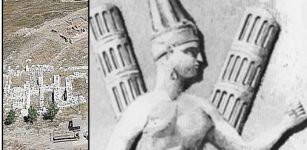 Cuneiform Tablet Unearthed In Hittite City Samuha Refers To Love And War Goddess Sausga
Archaeology | Oct 2, 2023
Cuneiform Tablet Unearthed In Hittite City Samuha Refers To Love And War Goddess Sausga
Archaeology | Oct 2, 2023 -
 Mysterious People Who Appeared Out Of Nowhere
Featured Stories | Sep 1, 2018
Mysterious People Who Appeared Out Of Nowhere
Featured Stories | Sep 1, 2018 -
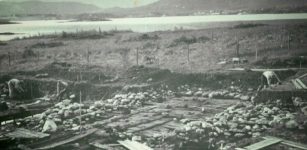 Lost Viking Village Borgund And Its 45,000 Artifacts Hidden In A Basement Examined By Experts
Archaeology | Apr 22, 2022
Lost Viking Village Borgund And Its 45,000 Artifacts Hidden In A Basement Examined By Experts
Archaeology | Apr 22, 2022 -
 Perchta: Evil Witch Of The Alps – An Old Tradition That Still Continues
Christmas Traditions | Dec 16, 2024
Perchta: Evil Witch Of The Alps – An Old Tradition That Still Continues
Christmas Traditions | Dec 16, 2024 -
 Ancient Intercontinental Underground Tunnels Built By Survivors Of A Great Catastrophe And The Snake God Connection
Ancient Mysteries | Jul 4, 2018
Ancient Intercontinental Underground Tunnels Built By Survivors Of A Great Catastrophe And The Snake God Connection
Ancient Mysteries | Jul 4, 2018 -
 Evidence Hominins Were Present In Europe Far Earlier Than Previously Thought
Human Beginnings | Jan 28, 2025
Evidence Hominins Were Present In Europe Far Earlier Than Previously Thought
Human Beginnings | Jan 28, 2025 -
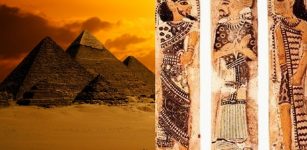 Mysterious Hyksos People Rose To Power In Ancient Egypt Through Marriage And Not Invasion – Researchers Say
Archaeology | Apr 17, 2019
Mysterious Hyksos People Rose To Power In Ancient Egypt Through Marriage And Not Invasion – Researchers Say
Archaeology | Apr 17, 2019 -
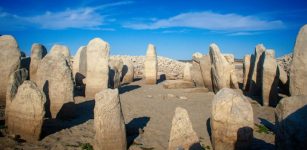 Stunning Spanish Stonehenge Built By The Celts Revealed By Drought
Archaeology | Aug 27, 2019
Stunning Spanish Stonehenge Built By The Celts Revealed By Drought
Archaeology | Aug 27, 2019 -
 Saqqara New Discoveries: Fifth Dynasty’s Pyramid Complex That Belonged To Queen Setibhor
Archaeology | Apr 15, 2019
Saqqara New Discoveries: Fifth Dynasty’s Pyramid Complex That Belonged To Queen Setibhor
Archaeology | Apr 15, 2019 -
 Strange Tales Of Loughareema – The Vanishing Lake Where People Are Lost
Featured Stories | Jul 10, 2025
Strange Tales Of Loughareema – The Vanishing Lake Where People Are Lost
Featured Stories | Jul 10, 2025 -
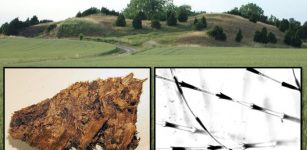 Surprising Discovery In Valsgärde Viking Boat Graves – Scandinavian’s Oldest Down Bedding Found
Archaeology | Mar 27, 2021
Surprising Discovery In Valsgärde Viking Boat Graves – Scandinavian’s Oldest Down Bedding Found
Archaeology | Mar 27, 2021 -
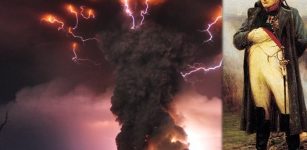 Was Napoleon Bonaparte Defeated At Waterloo Because Of Volcanic Eruption?
Archaeology | Aug 22, 2018
Was Napoleon Bonaparte Defeated At Waterloo Because Of Volcanic Eruption?
Archaeology | Aug 22, 2018 -
 Amazing Victorian Time Capsule – 135-Year-Old Message In A Bottle Found In Edinburgh
Archaeology | Nov 22, 2022
Amazing Victorian Time Capsule – 135-Year-Old Message In A Bottle Found In Edinburgh
Archaeology | Nov 22, 2022 -
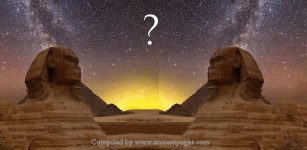 Has A Second Sphinx Been Found In Egypt?
Archaeology | Nov 5, 2021
Has A Second Sphinx Been Found In Egypt?
Archaeology | Nov 5, 2021 -
 How Emma Of Normandy Risked Her Life To Save England
Featured Stories | Jun 30, 2025
How Emma Of Normandy Risked Her Life To Save England
Featured Stories | Jun 30, 2025 -
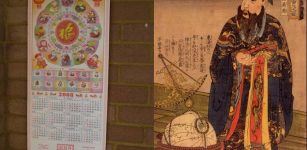 Ancient Chinese Tai Chu Calendar Was Defined By Emperor Han Wu
Ancient History Facts | Jun 3, 2019
Ancient Chinese Tai Chu Calendar Was Defined By Emperor Han Wu
Ancient History Facts | Jun 3, 2019 -
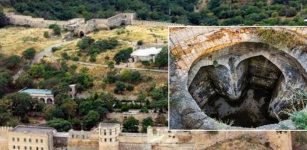 Subterranean Structure In Medieval Naryn-Kala Citadel: Was It The Christian Temple?
Archaeology | Jul 12, 2019
Subterranean Structure In Medieval Naryn-Kala Citadel: Was It The Christian Temple?
Archaeology | Jul 12, 2019 -
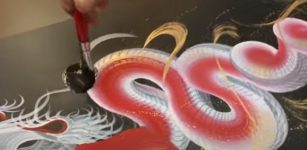 Amazing Ancient One-Stroke Dragon Art Tradition – Painting Dragons With A Single Brush Stroke
Ancient Traditions And Customs | Apr 29, 2021
Amazing Ancient One-Stroke Dragon Art Tradition – Painting Dragons With A Single Brush Stroke
Ancient Traditions And Customs | Apr 29, 2021 -
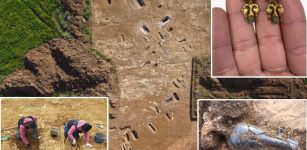 Incredible Roman Necropolis With Dressed Skeletons Buried In Ornate Tombs Discovered Close To The Ancient City Of Tarquinia
Archaeology | Jan 9, 2024
Incredible Roman Necropolis With Dressed Skeletons Buried In Ornate Tombs Discovered Close To The Ancient City Of Tarquinia
Archaeology | Jan 9, 2024




